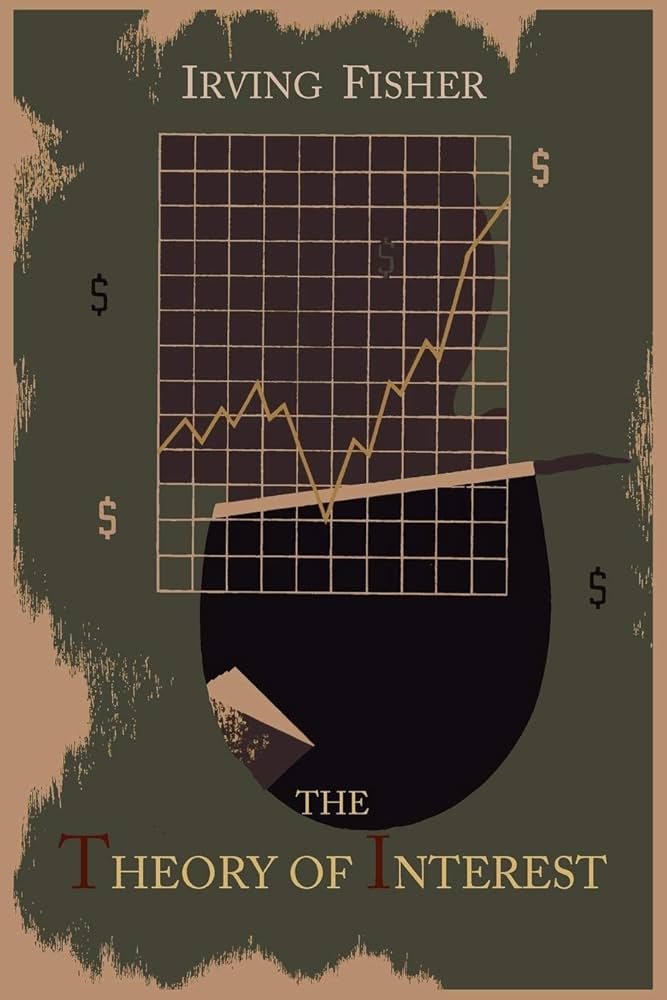
This is a fairly old book. It was written by Yale economics professor Irving Fisher in 1930. It is pretty astounding that much of what is contained in it is still relevant today. It was written well before the invention of the credit card and when auto financing was a relatively new thing. This book answers a question that is quite simple to pose, but rather difficult to answer concisely. It is this – How are interest rates determined? Currently, in this country, the Federal Reserve explicitly states the interest rate at which it will lend money to banks. From this many other interest rates are calculated. These include mortgage rates, car loans, and business loans, but what makes a person comfortable lending or borrowing at a particular rate? The answer can be simply stated – it is the level of impatience. Impatience is typically motivated by enjoyment. A young, single man who just landed his first job out of college may take out large loan on very nice car. This will give him the immediate enjoyment of driving a comfortable, flashy and stylish vehicle. He is trading some of his future income (he’ll be making payments for a while) for the immediate satisfaction of a flashy new car. The lender is happy to get a stream of revenue for the next five, six, or even seven years. The young graduate is exchanging some of his future interest for immediate enjoyment. If the new graduate had also recently become a father, he would probably be less willing to make this exchange at as high an interest rate as single graduate, if at all. The father, in this example, has less impatience than the single graduate. Impatience will drive someone to sacrifice future interest for immediate enjoyment. This will factor heavily into the interest rate this person is willing to pay for a loan.
The interest rate where the supply of those willing to borrow at that rate, matches that of those willing to lend at that rate, with risk factored in, will be the interest rate. It does make one question how something like this can accurately be computed and then dictated by the Federal Reserve. As with anything related to economics, at least in my understanding, is that anything artificially induced will eventually be corrected. This is, in part, one reason why communism failed in the former Soviet Union. Supply and demand is a naturally occurring phenomenon. Artificially dictating it with someone like a Czar that predetermines that we need to build x number of automobiles and x number of washing machines proved to create excesses of some things and shortages of others. It created waiting lists for cars and warehouses of rotting, unused washing machines. So how does the Fed get the Federal Reserve lending rate right? I am guessing it often does not.
Later chapters in the book derive equations for market rates and rates of impatience with fixed assumptions. Sort of like equations for the movement of a projectile in a vacuum or movement of a projectile with no wind. These formulae go deep into the weeds applying Calculus to account for changes in parameters over time. In the end, however, the author acknowledges that they discount some consumer psychology, risk, and other factors and that theory and practice can be miles apart. If you have any interest in reading this book – who doesn’t want to read a 500+ page economics book? – you can probably skip these chapters (11-13). It is a very dry read through these chapters and you probably aren’t going to come out with much you can apply from them unless you are, or will be a graduate-level economics student. Ultimately, the interest rate will approach a point where the incomes, supply, demand, impatience, and risk of all involved near an equilibrium point, but never really settles as all the multitude of variables involved continuously change.
Towards the end of the book the author makes the assertion that interest rates and prices are positively correlated, but that interest often lags price changes. It says that interest follows prices, but that the opposite is not necessarily true. I guess the Federal Reserve (The Fed) thinks differently? The Fed typically alters lending rates to banks to control inflation. Inflation is another way of saying pricing. Inflation is an increase in pricing. In manipulating rates, The Fed does what this author would likely disagree with, which is manipulate interest rates to control pricing (inflation). I guess this view of economics has changed since this book was written? Let’s hope so, or The Fed is just manipulating the economy without hope of predictable results. Anyway, the insight into predicting different levels of impatience in people still holds true and is good at predicting human behavior with regard to lending, borrowing, and spending behavior. This was an interesting book, but I think I need some fiction to wash it down. I am going to deviate from the economics/investing books for a little while.



